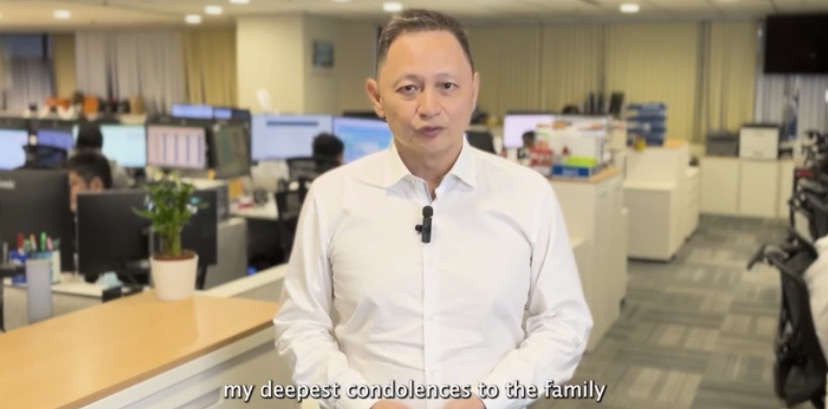The head of Singapore Airlines has apologised after a flight on Tuesday was hit by “severe extreme turbulence”, killing one person and injuring dozens.
Goh Choon Phong said the airline was “very sorry for the traumatic experience” for those onboard flight SQ321 from London to Singapore.
The flight was forced to make an emergency landing in the Thai capital Bangkok.
Some 79 passengers and six crew members are still in Bangkok – where they are receiving medical treatment for injuries.
A relief flight carrying the remaining passengers and crew members arrived in Singapore early on Wednesday.
The plane, which had 211 passengers and 18 crew members onboard, hit severe turbulence over the Indian Ocean and dropped more than 6,000 feet (1800m) in three minutes.
In a video statement on Wednesday, Mr Goh said the airline was “fully cooperating with relevant authorities on the investigations”.
He also expressed his condolences to the family of the victim, adding that they would “render all possible assistance” to affected passengers and crew members.
Mr Goh added that the plane was 10 hours into its journey and flying over the Irrawaddy Basin at an altitude of 37,000 feet when it encountered the turbulence.
A 73-year-old Briton, Geoff Kitchen, died of a suspected heart attack during the flight, while several others remain in a critical condition.
Mr Kitchen was believed to be on board the flight with his wife, with the pair headed to Singapore to start a six-week holiday, said media reports.
Andrew Davies, a British passenger onboard the Boeing 777-300ER, told the BBC’s Radio 5 that the plane “suddenly dropped… [with] very little warning”, adding that he recalled seeing a woman with an “awful gash on her head”, while another was heard “screaming in agony”.
Another passenger said those not wearing seatbelts were “launched immediately into the ceiling”.
“I saw people from across the aisle just going completely horizontal, hitting the ceiling and landing back down in really awkward positions. People getting massive gashes in the head concussions,” Dzafran Azmir told Reuters.
Mr Azmir added that people’s heads had slammed into the overhead panels above the seats and “pushed through” some of the panels.


